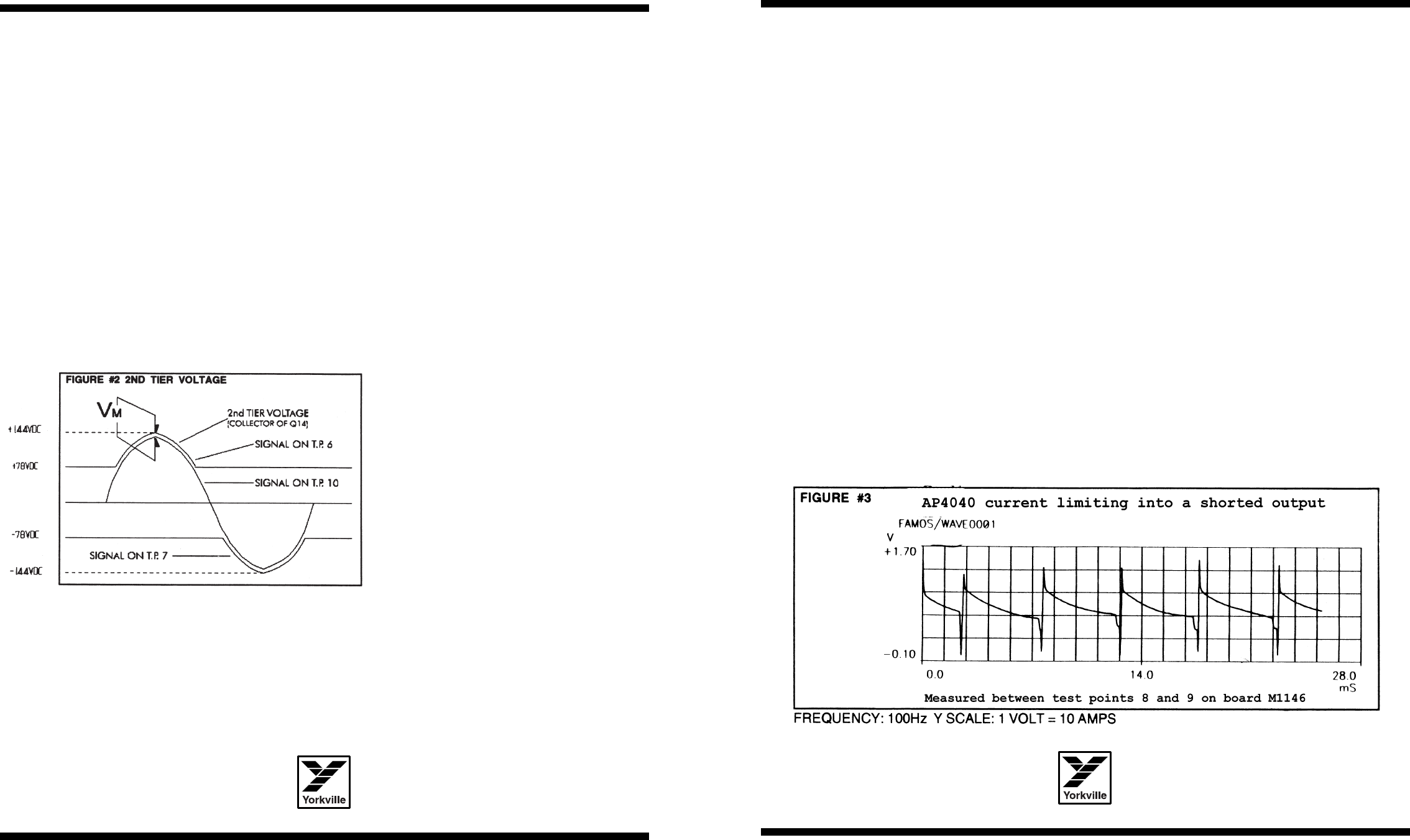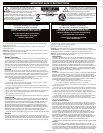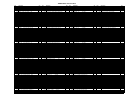
550 Granite Court, Pickering, Ontartio CANADA L1W-3Y8
4625 Witmer Industrial Estate, Niagara Falls, New York USA 14305
SERVICE MANUAL
3
Yorkville Sound • http://www.yorkville.com
550 Granite Court, Pickering, Ontartio CANADA L1W-3Y8
4625 Witmer Industrial Estate, Niagara Falls, New York USA 14305
SERVICE MANUAL
3
Yorkville Sound • http://www.yorkville.com
This causes Q40 to turn off until the reduced current flowing through Q5 maintains
0.5V across R12. Q1 will turn off slightly causing Q5 and Q40 to increase their collector
currents. The circuit reaches a point of equilibrium with approximately 0.5V across R12.
Because all output devices are not identical and base emitter voltages vary, some
adjustment must be available to slightly adjust the 0.5V across R12. This is accom-
plished with RT1. RT1 causes Q1 to turn on slightly more or less resulting in Q5 and
Q40 turning on slightly more or less and therefore R12’ s voltage will be slightly more
or less than 0.5v. The proper quiescent current voltage is 4mV (to be measured
between test points 8 and 9).
The Second Tier and Tier Switching
Refer to the simplified schematic Fig. #1 while reading the following text. One way of
making an amplifier more efficient is to vary the Power Supply Voltage on the collec-
tors of the output transistors (Q14 & Q22). The lower the voltage from collector to emit-
ter, the lower the device dissipation. During quiescent conditions, there is 55VDC on
the collectors of output transistors Q14 and Q22. The peak AC voltage that can appear
on the amplifier’s output is approximately 139V peak. How can an output transistor
deliver a 139V peak when its collector is only at 78VDC? It can if its collector is pulled
up to 144VDC as the output signal’s peak rises above 78VDC. Refer to Fig. #2. The
second tier voltage must remain above the amplifier’s output voltage by amount Vm.
Therefore the circuitry controlling the second tier voltage must increase the tier voltage
before the amplifier’s output voltage reaches 78VDC. This leading voltage is necessary
to compensate for time lag of the second tier circuit during fast rising amplifier output
signals.
The voltage between the amplifier’s output
and test point 4 is approximately 12VDC
derived from the voltage drop across ZD4. We
call this voltage the “floating battery” because it
floats on top of the output audio signal with test
point 4 always being 12VDC greater than the
peak of the output signal. Test point 4 drives the
gate of mos-fet Q11. Q11 controls the transis-
tors of the upper tier. As Q11 turns on its source
forward biases the base of Q13 and Q13 pulls
the collector of Q14 towards the 100 volt rail.
The gate to source voltage needed to turn on
Q11 is approximately 3.5 volts. When the peak
output signal is about 69.5vp (78v-(12v-3.5v))
then Q11 will start to turn on the second tier.
The second tier voltage will remain about 13
volts (Vm) above the peak of the output signal
to the point of clipping where this voltage is reduced to about 6 volts (measured dri-
ving an 8 ohm load). Zener ZD8 protects the gate source junction of Q11 and also pro-
vides a supply current path through R29 for the “floating battery”.
NOTE: The Power supply voltages given are those when the amplifier is not driving a
speaker load. This will allow yo to check the tier switching with the cover of the amplifi-
er off and the amplifier, therefore, running cool.
Current Limit Protection Circuitry
To have an amplifier drive 3000 watts into practically any combination of speaker cabi-
nets and know what is a safe load and what is not is a very difficult task. An extensive
amount of time was spent on the current limit circuitry so that it may simulate the safe
operating area of the output transistors (SOAR curve). No matter how reactive the load
may be the phase shift that it presents, along with it’s resistive component is used to
set the output current limit of the output transistor stage.
Refer to the schematic of board M1146 while reading the following text. The current
limit circuitry is a mirrored image with circuitry connected to the positive power supply
rail being identical (but opposite polarity) to the circuitry connected to the negative
power supply rail. For this reason we will look at the positive side of the circuitry.
Transistor Q9 measures the peak current flowing through resistor R53. The voltage
across R53 (as a result of the current flowing through it) is scaled down by R55, R35,
R35A, R36, R37, D7 and D11 these parts make up the safe operating area along with
the time constants of C30, R34, C12 and R26. Fig. #3 shows a waveform of the current
that passes through R52 and R53 when the output of the amplifier is shorted to ground.
This can only be seen by using an oscilloscope to measure differentially across R52
and R53. The conditions of the measurement are contained on the diagram. During cur-
rent limit when Q9 turns on it reduces the voltage across R42. R42 is in series with a
16 volt zener (ZD7) and is also in parallel with the junction of Q8. The current that flows
through R20, ZD7, R42, and R22 normally saturates Q8. When Q9 reduces the voltage
across ZD9 and R42 to below 16.6 volts, Q8 turns off allowing a charge to build up on
C8 through resistors R24 and R25. If current limiting occurs for a long enough duration
to allow C8 to charge to 1.2 volts then Q7 will turn on tripping the relay circuit on board
M1147. As soon as the relay is tripped the audio signal will be turned off at the output
of the voltage amplifiers and will remain off for about 5 seconds before the relay turns
on and allows the audio signal to pass through the amplifier. If a current limit condition
is still present then the whole cycle will occur again and repeat until the load conditions
on the amplifier’s output are safe for the amplifier. When a safe load appears the ampli-
fier will automatically reset and drive that load (the speaker cabinet).
DC Protection
If a DC voltage greater than 8 volts appears on the output of the amplifier for more
than 200 milliseconds then triac Q30 will turn on holding the output at ground poten-
tial. MBS4992 is a device that turns on at either + or - 8 volts DC.


















